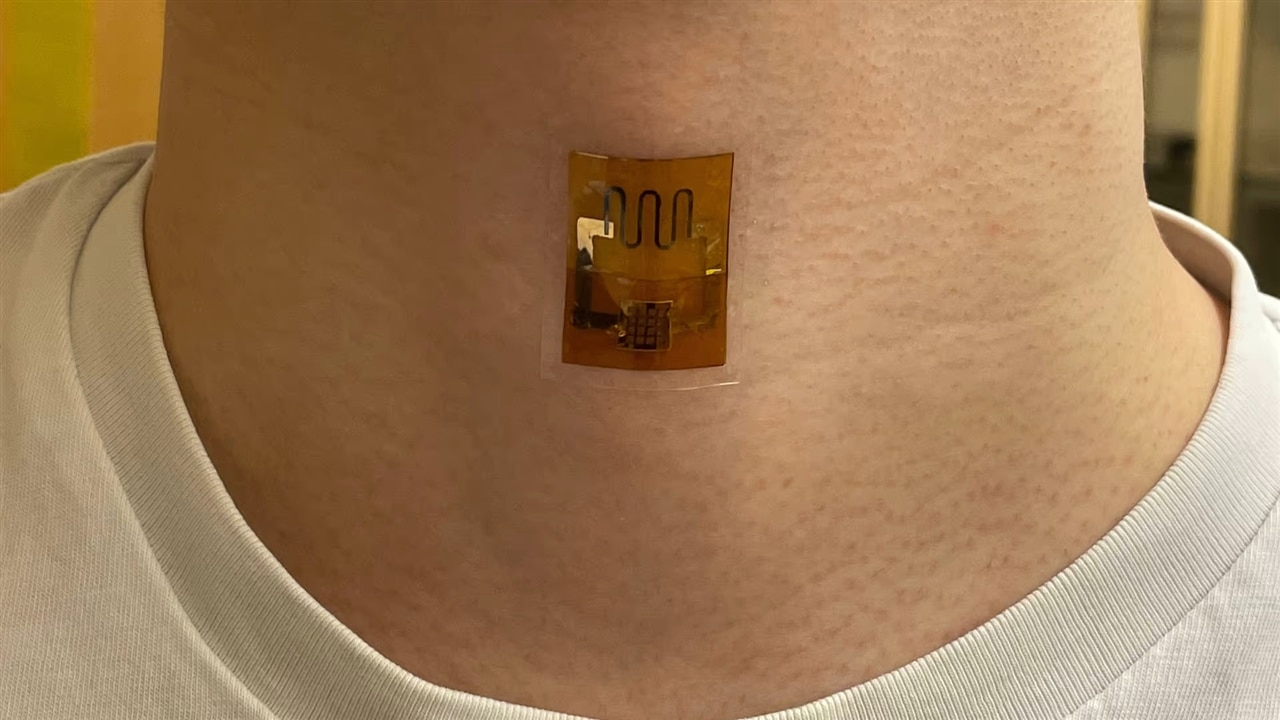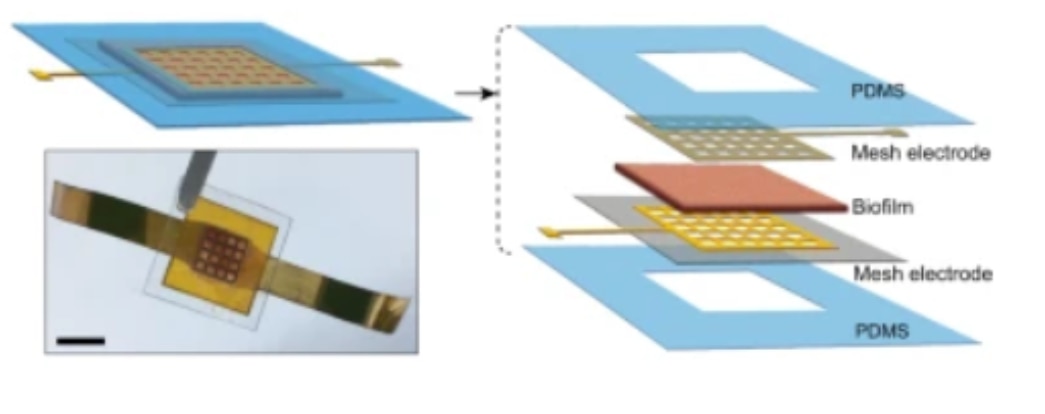
The team's biofilm collects energy from sweat evaporation and converts it into electricity to power wearable electronics. (Image Credit: Liu et al. / University of Massachusetts Amherst)
University of Massachusetts Amherst researchers recently engineered a wearable biofilm to collect sweat evaporation energy from human skin, turning it into electricity. The biofilm could one day revolutionize wearable electronics by powering all sorts of personal medical sensors and personal electronics.
"This is a very exciting technology," says Xiaomeng Liu, a graduate student in electrical and computer engineering at UMass Amherst's College of Engineering and the paper's lead author. "It is real green energy, and unlike other so-called 'green-energy' sources, its production is totally green."
The biofilm can be created via a natural process from an engineered Geobacter silfurreducens bacteria. This bacteria generates electricity and serves as microbial batteries, powering electronics. However, this also means G. Sulfurreducens must undergo proper maintenance and regular feeding. In comparison, the team's biofilm operates all the time because it doesn't require constant feeding since it's dead.
"It's much more efficient," says Derek Lovley, Distinguished Professor of Microbiology at UMass Amherst and one of the paper's senior authors. "We've simplified the process of generating electricity by radically cutting back on the amount of processing needed. We sustainably grow the cells in a biofilm, and then use that agglomeration of cells. This cuts the energy inputs, makes everything simpler and widens the potential applications."

I'mage showing the biofilm (left) and schematic (right). (Image Credit: Liu et al. / University of Massachusetts Amherst)
Instead, the biofilm relies on human skin moisture to generate energy. The Earth's evaporating water involves consuming 50% of energy from the sun. "This is a huge, untapped source of energy," says Jun Yao, professor of electrical and computer engineering at UMass and the paper's other senior author. Human skin is typically moist from sweat, which means the biofilm can harvest the energy in evaporation, converting it into sufficient electricity for powering small wearable devices.
G. sulfurreducens grows in thin mat-like colonies, with each microbe forming connections with one another through natural nanowires. Afterward, the team collects the mats and uses a laser to etch small circuits on the films. Next, the team places the films between electrodes and seals them within a wearable soft, sticky, breathable polymer. After applying it to the skin, the biofilm generates electricity via sweat evaporation to power devices.
"The limiting factor of wearable electronics," says Yao, "has always been the power supply. Batteries run down and have to be changed or charged. They are also bulky, heavy, and uncomfortable." A small, transparent, thin, flexible biofilm worn on the skin like a Band-Aid that generates continuous energy could solve those issues.
The biofilm also underwent testing, showing that it can perform consistently for at least 18 hours. It powered a strain sensor measuring respiration, pulse, and other human body signals. Interconnecting three biofilm sheets allowed it to power a laser-patterned wearable electrochemical glucose sensor. The biofilms exhibited similar performance levels on day 35 compared to day one.
"Our next step is to increase the size of our films to power more sophisticated skin-wearable electronics," says Yao. Ultimately, the team wants to use it to power electronic systems instead of a single device.
Have a story tip? Message me at: http://twitter.com/Cabe_Atwell

-

dougw
-
Cancel
-
Vote Up
0
Vote Down
-
-
Sign in to reply
-
More
-
Cancel
Comment-

dougw
-
Cancel
-
Vote Up
0
Vote Down
-
-
Sign in to reply
-
More
-
Cancel
Children